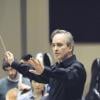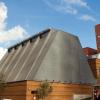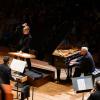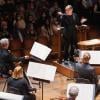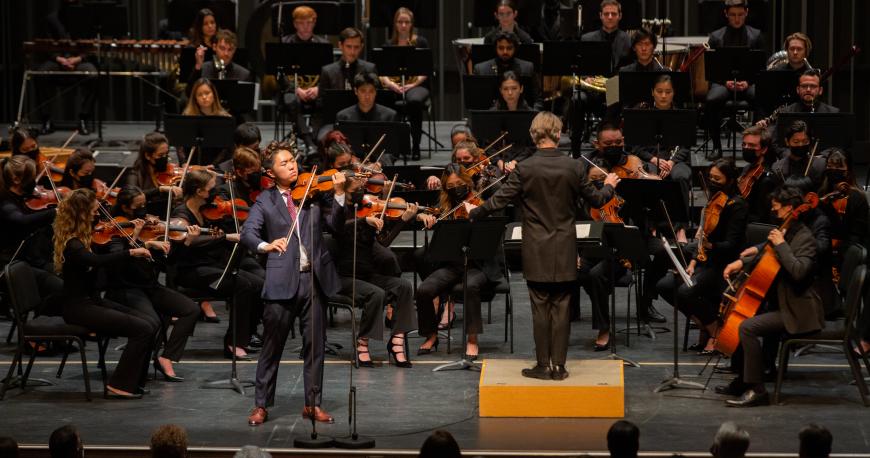
While Esa-Pekka Salonen’s most visible gig in California these days is with the San Francisco Symphony, he continues to play an important part of musical life in Southern California.
Besides continuing as conductor laureate of the Los Angeles Philharmonic, in fall 2018, just around the time that he signed on for the San Francisco post, Salonen joined the faculty of the Colburn School of Music to lead and develop the Negaunee conducting program. Now and then, Salonen also guest-conducts the student Colburn Orchestra in public concerts like the one in The Soraya at Cal State Northridge Saturday night (Nov. 13), which certainly qualified as one of the biggest music bargains you’ll ever find.
The concert was free, one of a number of free Soraya fall events designed to get people still wary about the pandemic to come back to the concert hall. The repertoire was big-thinking and out of the ordinary — Shostakovich’s Violin Concerto No. 1 and Bruckner’s Symphony No. 6. Yet even for a concert headed by a world-famous conductor who happens to be a local hero, it was far from a full house. Maybe there is still a lot of reluctance among classical fans, who tend to be older, to go out in public, or perhaps it’s the issue The Soraya has had since its opening 10 years ago — its location in the middle of the San Fernando Valley, far from freeways and the usual centers of cultural action.
The Violin Concerto had a birth that was as tortured as the music within it. Shostakovich actually wrote it for the great David Oistrakh in 1948 but hid it in his desk for years, fearing that it would further inflame the “anti-formalist” authorities who were giving him a bad time. He kept it under wraps until 1955, two years after his tormentor Stalin’s death, and Oistrakh promptly set the benchmark for the piece live and on several recordings.
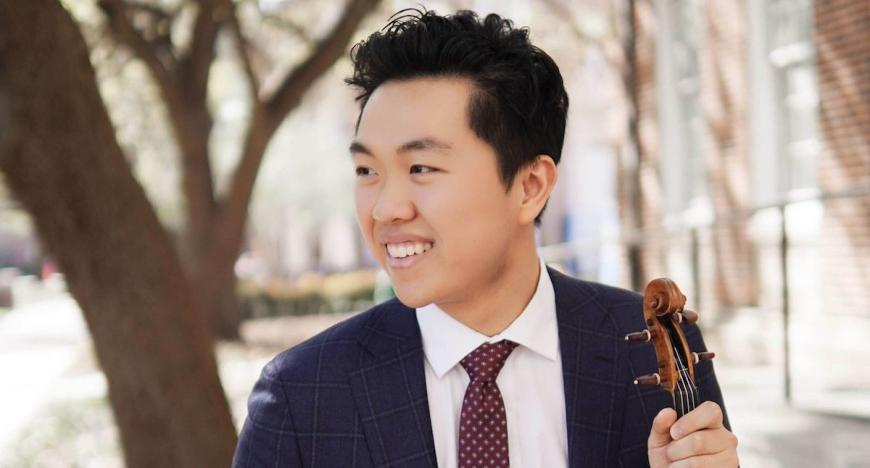
Violinist Hao Zhou was supposed to have played the concerto last year as a Colburn student, but that was thwarted when the COVID put a stop to all activities. Fortunately, even though Zhou has graduated, the school wanted to make up for the cancellation and give him his promised crack at the work. It’s a challenging piece for a young soloist, and Zhou was up to its technical requirements, producing long, sustained, in-tune legatos to preserve the line of the first movement in a songful manner, blazing through the pyrotechnics of the long cadenza and immediately succeeding finale. What I don’t hear yet is the wail of a depressed, tortured yet inwardly defiant composer behind the notes, although some of the emotion began to seep through in the slow third movement. All it takes is experience to go along with the skill.
Salonen got the tempos moving at comfortable speeds, the young players gave their all — in the case of the winds, too much all in spots, almost drowning out the soloist. Afterward, Zhou provided some solo razzle-dazzle on his 1783 Gagliani violin with an encore that he nailed, Eugène Ysaÿe’s Sonata No. 6 for solo violin.
One thing that I do not understand is why Bruckner’s Symphony No. 6 remains to this day one of the least-played of the composer’s cycle of nine numbered and two zero-numbered symphonies. It’s just as strong in overall inspiration as any of them, while being somewhat shorter in length than its immediate neighbors and thus, you would think, easier to assimilate. Bruckner’s scherzos are often the high point of his symphonies, and the Sixth has a particularly haunting one, with a Trio that has a brief quote from Wagner’s “Magic Fire Music.”
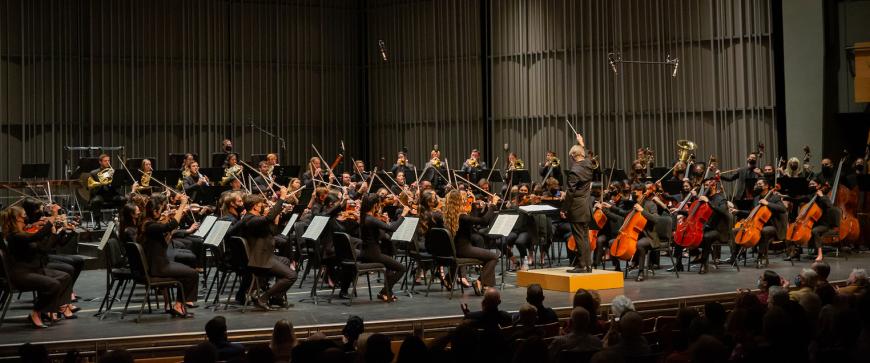
On one hand, Salonen is not the kind of conductor that I would ordinarily associate with a composer of mountainous, intensely religious or spiritual (depending upon the listener’s personal beliefs) Austrian symphonies. Yet on the other hand, the Sixth does seem like it would be a more congenial fit for him than some of the others due to its somewhat leaner-sounding scoring and less monumental proportions.
Salonen’s solution to the occasionally wayward structural patterns of Bruckner was to power his way through at mostly fast tempos — in the case of the Scherzo and finale, very fast. There’s no element of mystery in this approach, little textural weight, no lingering to gaze at the view. Yet this way, the score comes off more unified than it might have been at a more leisurely stroll, and Salonen could still produce some expressive phrasing from the strings along the way and mold the big arching tune in the Adagio movement convincingly. And crucially, the brasses acquitted themselves pretty well in an idiom that demands top-notch brass playing, earning a trip from the pleased conductor to the back of the orchestra at the curtain call.


